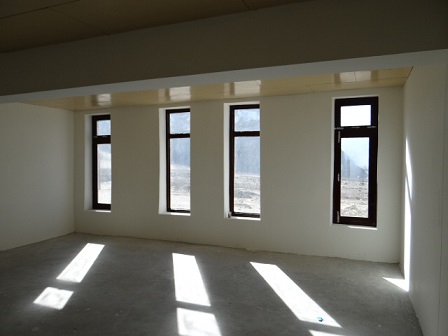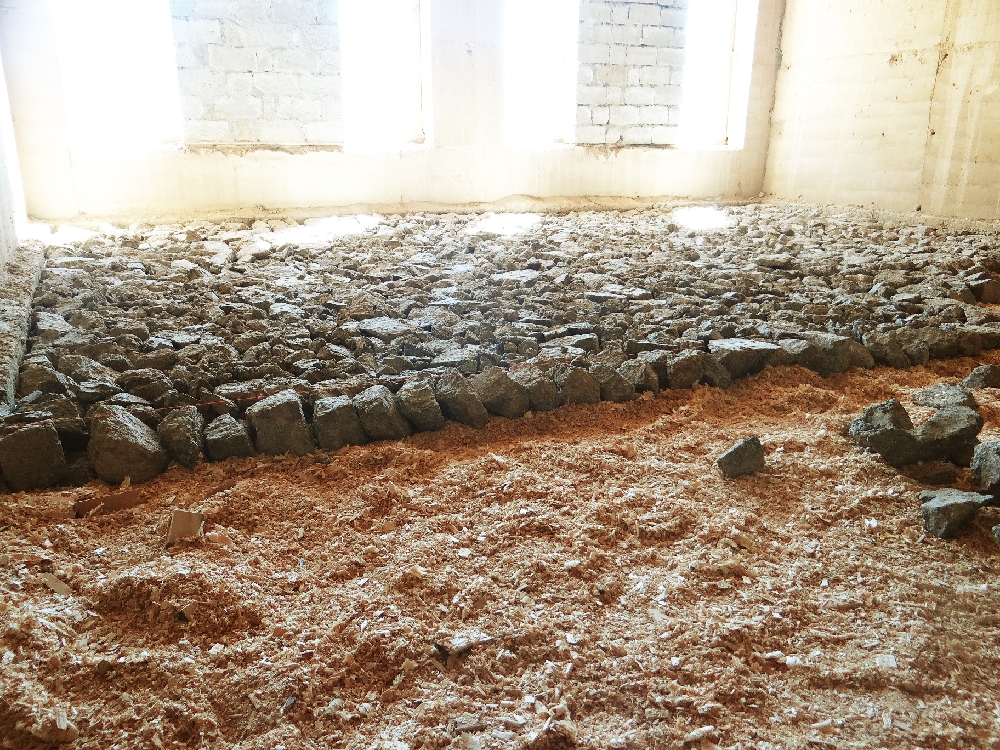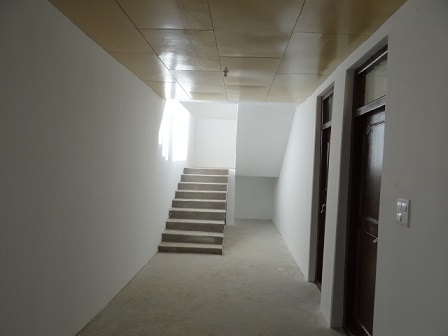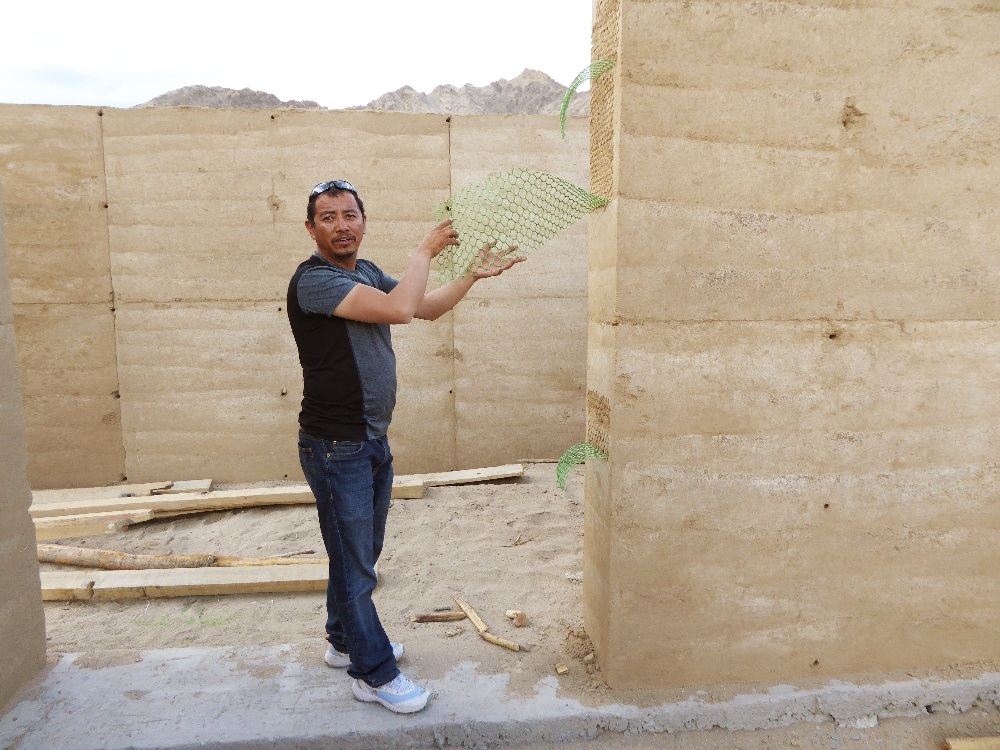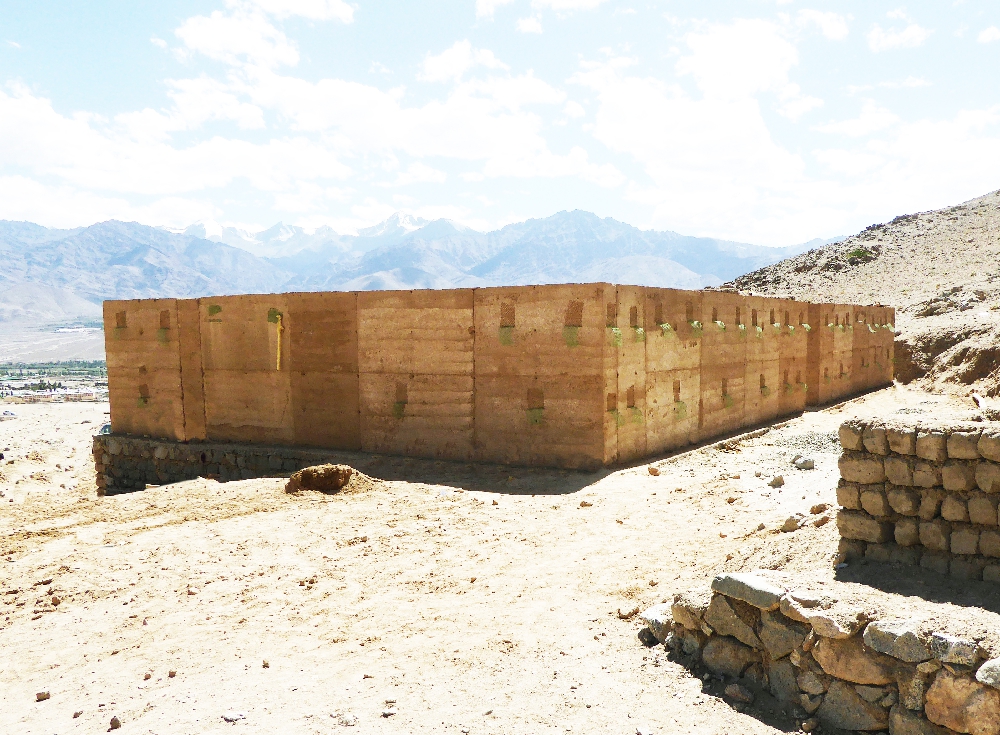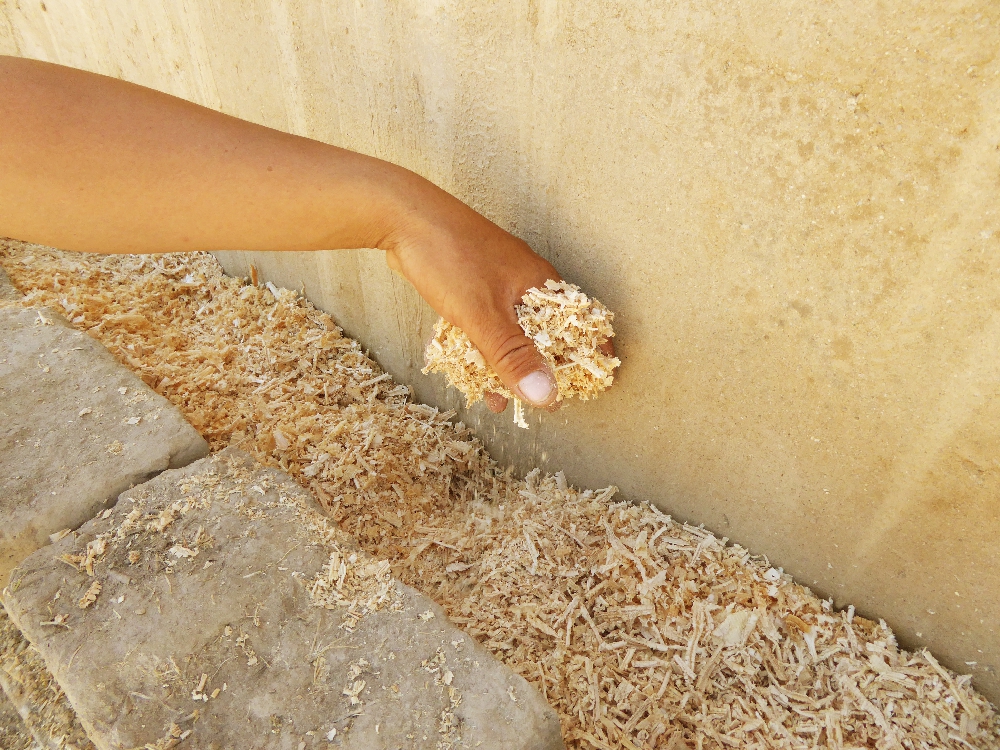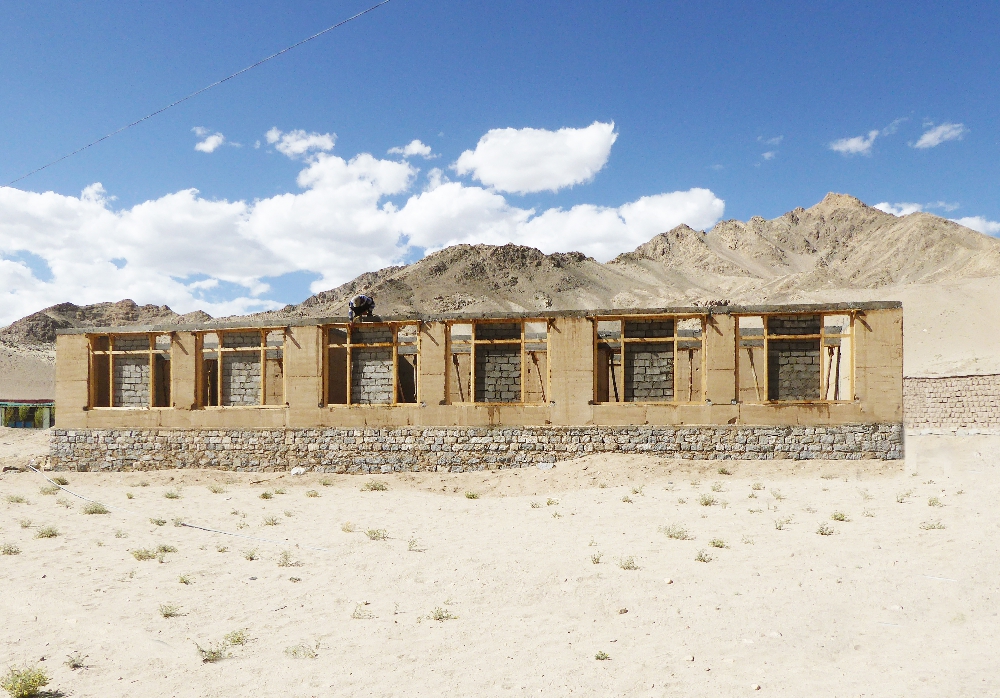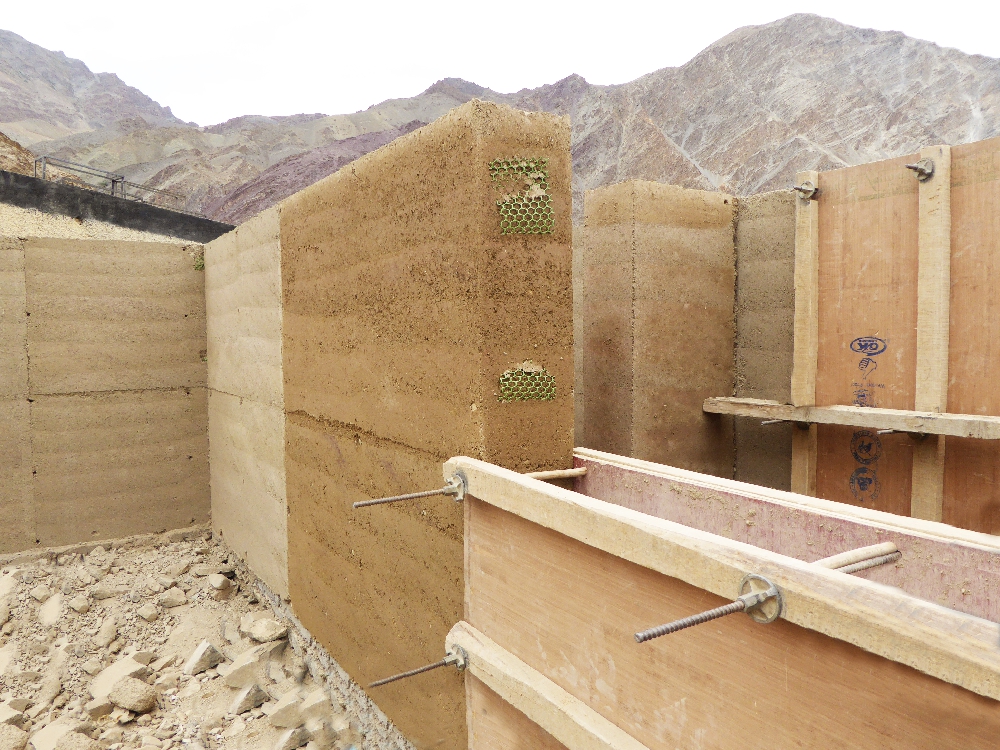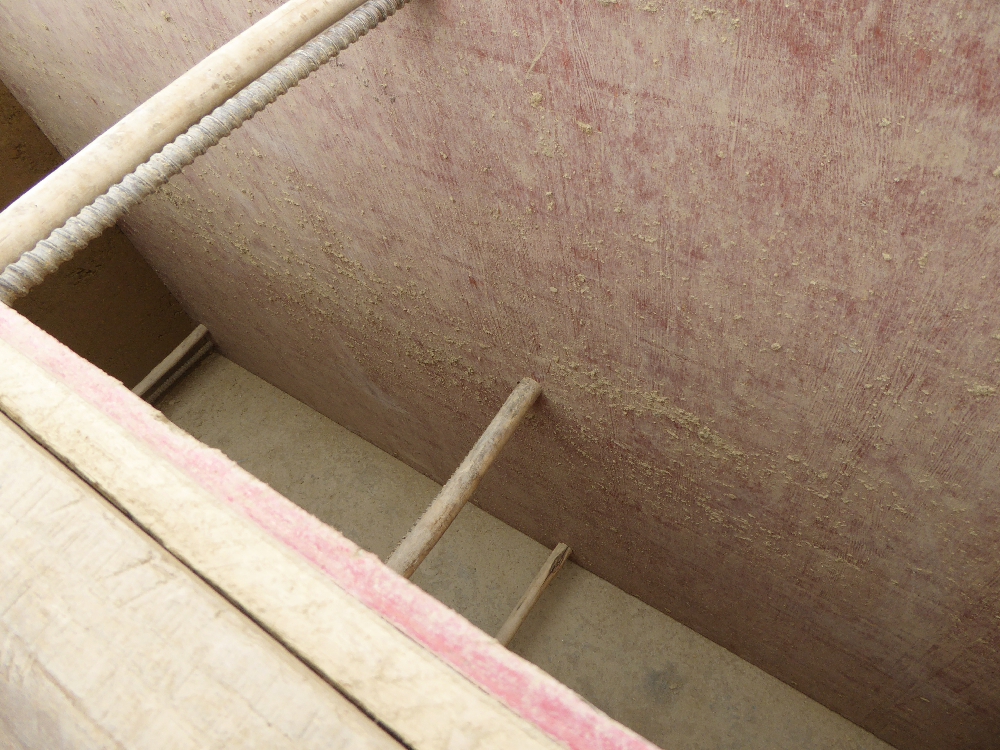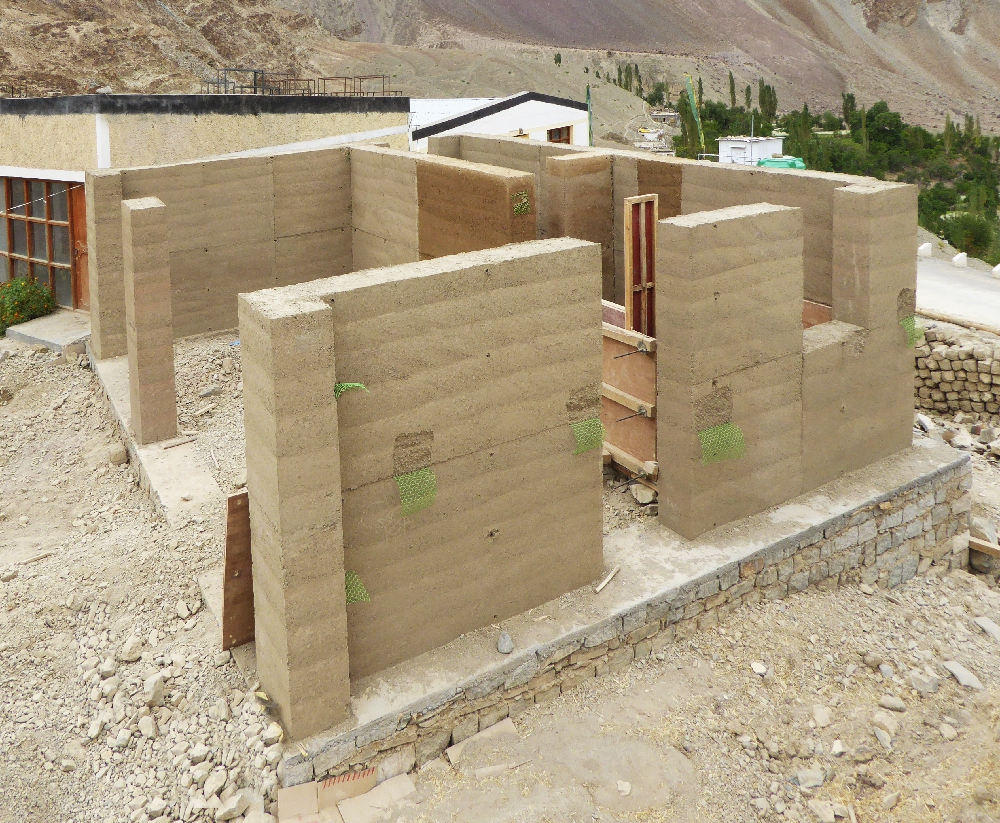Where possible, Lotus Flower Trust projects are built using the Rammed Earth Technique. Rammed Earth is a very old building method, probably one of the most ancient in the world. It uses only natural materials. The oldest surviving rammed earth buildings are about 8,000 years old and were built in areas with few trees. The technique was also used on the Great Wall of China. In Ladakh and Tibet, several monasteries and forts were built hundreds of years ago and many are still standing in spite of the severe weather. Today, one third of the human population resides in buildings made of earth.
Rammed Earth materials can be found freely in and around the sites of the projects, are natural, recyclable and sustainable. The walls are made using a mixture of clay, silt, sand and gravel. The clay acts as a binding agent with water added to activate the binding forces. The walls are built by ramming the earth between two wooden panels, removed on drying. Double walls are placed on the sides exposed to the cold weather. Sawdust (produced on site) is placed between the two walls as insulation.
The walls are load bearing and need no further finishing. The structure breathes – air exchanges without significant heat loss. The Rammed Earth also works naturally as a thermal mass, storing heat in winter and rejecting it in summer, eliminating the need for artificial heating. The building is oriented towards the south for maximum sunlight and painted black to absorb radiation. Double-glazing is used on all windows.
As the Himalayas are in the most earthquake prone area in the world, wire fencing is built into the earth walls which allows the walls to flex and move in the event of a tremor.
The levelled earth floor is first covered with a plastic membrane to keep out moisture. Then sawdust is spread over the plastic, large rocks are placed evenly over the sawdust and the floor is covered by cement.
The result is an energy efficient building adapted to Ladakh’s extreme weather conditions.
Although the construction process is more labour intensive, the technique saves on material costs, energy for transportation and heating costs.
Just plain old earth, which can be used again on a new building or re-absorbed into the environment. Amazing!



